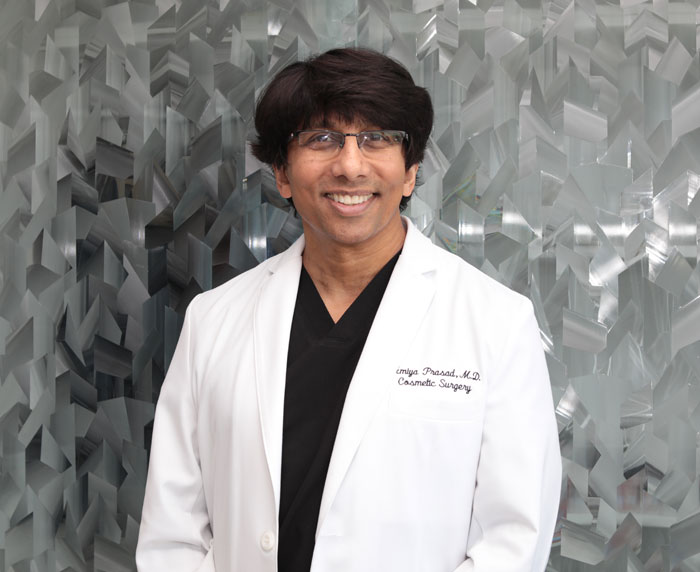Best Treatment for Under Eye Wrinkles: Fillers, Surgery, or Lasers?
Summary
Under-eye wrinkles are primarily due to skin quality, not just excess skin. Dr. Prasad, an oculofacial plastic surgeon, emphasizes a gentle approach, often combining fractional lasers (like Erbium and CO2 with PRP) for skin quality. Fillers (like Juvederm Voluma) can provide foundational upper cheek support. Transconjunctival blepharoplasty (surgery from inside the eyelid) for bags, which avoids external incisions and preserves eyelid structure.
He advises against eyelid skin removal often done with transcutaneous blepharoplasty due to high incidence of complications like lower eyelid retraction. The goal is natural, lasting results, requiring minimal downtime, tailored to each patient’s specific needs.
FAQs
What causes under eye wrinkles – is it extra skin?
The primary cause of under-eye wrinkles is a decrease in skin quality rather than excess of skin. While pulling the skin might make it appear smoother, surgery to remove “excess” skin can lead to complications like eyelid rounding or retraction, as the skin is extremely thin and has low tolerance for aggressive treatment.
Is laser treatment safe for under-eye wrinkles?
This depends on the skin type, and the amount of exposure and heat. Fractional lasers like Erbium or CO2 combined with PRP are safe and effective, especially when done conservatively in lighter skin types. Darker skin types prone to hyperpigmentation may not be suitable for laser treatments, so different settings, or radiofrequency treatment may be used instead. Downtime is minimal with the “Smooth Eye” laser treatment.
What types of laser treatments does Dr. Prasad use for under-eye wrinkles, and what should I expect?
Dr. Prasad uses advanced laser technologies like long-pulsed Erbium fractionated laser (for the “smooth eye” procedure) and fractional CO2 laser, usually combined with PRP to reduce exposure to heat while still stimulating collagen. These lasers work by stimulating collagen production to improve skin quality and texture. The “smooth eye” procedure takes minutes, uses topical anesthetic, involves no downtime, and typically requires three sessions, one month apart.
Radiofrequency is used for darker skin types that are prone to hyperpigmentation from laser treatments. PRP is also combined with radiofrequency procedures to stimulate collagen, but without excess exposure to heat.
Can fillers help with under-eye wrinkles?
Yes. Softer hyaluronic acid fillers can help with hollowing under the eyes, while thicker fillers (Structural Volumizing) can add volume and support the upper cheeks, just below the lower eyelids.
What is the best surgical option for under eye bags?
Transconjunctival blepharoplasty, which removes fat from inside the eyelid without an external incision, Dr. Prasad preferred this method because it preserves natural eyelid support, maintains the natural eye shape, and avoids complications associated with transcutaneous blepharoplasty such as lower eyelid retraction.
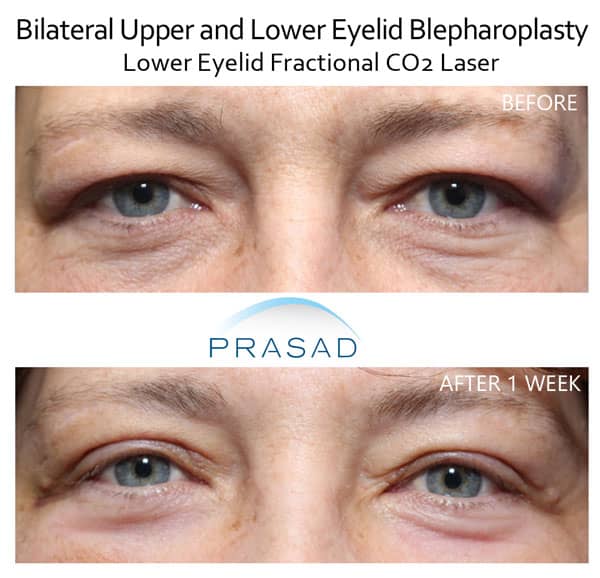
Many people come into my office and demonstrate how pulling the skin under the eyes outward results in smoother skin. “Can you do this doctor?” they inquire.”. With a mirror, I demonstrate how the areas around their eyes become distorted, and how the level of tension they use with their fingers cannot be sustained long-term with surgery. Nonetheless, surgery to treat under eye wrinkles is still very common, and the risks of this approach can be quite severe. Here, I’ll go over how I treat under-eye wrinkles in my practice, providing insights into the best procedure for under eye wrinkles for each unique case.
As a cosmetic eyelid surgery specialist, I regularly perform all types of cosmetic eyelid surgeries for under eye bags, hooded eyelids, as well as revision work to correct complications from other surgeons, such as eyelid skin removal to treat wrinkles causing rounding of the eyes, lower eyelid retraction, and even ectropion where the inside of the lower eyelid is exposed outward.
Under Eye Wrinkles Misconception: It’s Not Always About Excess Skin
Excess skin is thought to be the cause of wrinkles under the eyes. People pulling on the skin and observing how it does not snap back into place quickly reinforces this perception. However, this actually reflects a decrease in skin quality rather than an increase in skin quantity.
The skin on the eyelids is the thinnest in the body, measuring about half a millimeter. It’s important to remember that this extremely thin skin has a low tolerance for overly aggressive treatment.
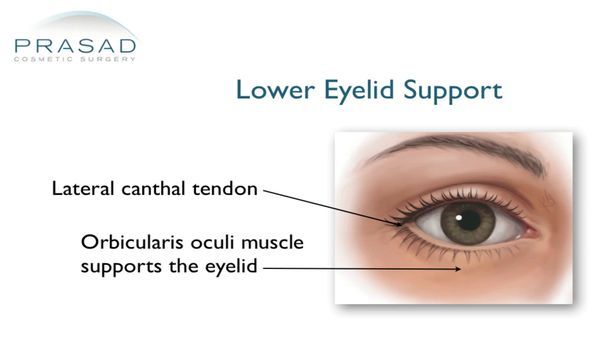

In addition to skin quality, the appearance of the eyelid skin is influenced by lower eyelid tension.
The lower eyelid functions as a suspension bridge, with the lateral canthal tendon serving as an especially important point of support. If this tendon becomes lax for any reason, the eyelid margin may sag and the skin may appear loose and redundant. Laxity of the lateral canthal tendon is common with aging, but I also see it in people who suffer from seasonal allergies.
Under Eye Wrinkles: Fillers, Surgery, or Laser Treatment?
When considering the best procedure for under eye wrinkles, we explore several highly effective options. Here’s a breakdown of how laser, radiofrequency, and surgery address under-eye wrinkles.
Laser Treatment for Under Eye Wrinkles
It has been well established that removal or ablation of the epidermis and the upper part of the dermis using chemical peels, or lasers can result in smoother looking skin.
Thermal energy delivered to the dermis causes collagen production, which can improve the foundation for the epidermis. After a chemical peel or laser treatment, the new epidermis appears smoother. I’ve used ablative CO2 and erbium lasers as well as fractionated CO2 and erbium lasers in my practice.
The challenge has always been to be able to perform an under-eye wrinkle procedure without the typical one-week downtime. Keeping this in mind, I’ve been using a long pulsed Erbium fractionated laser for the “smooth eye” procedure. This procedure takes only a few minutes and is performed in my exam room using only topical anesthetic.
The patient has no downtime and comes in for three sessions, one month apart. If a patient’s eyelid skin is crepey and thin, I frequently use PRP to help the skin to better tolerate any laser procedure.
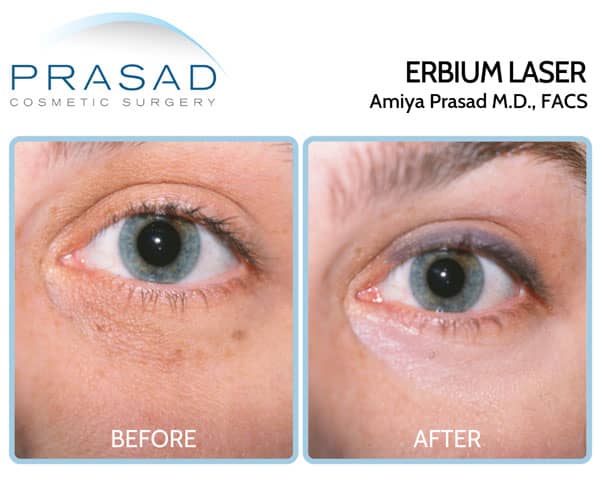
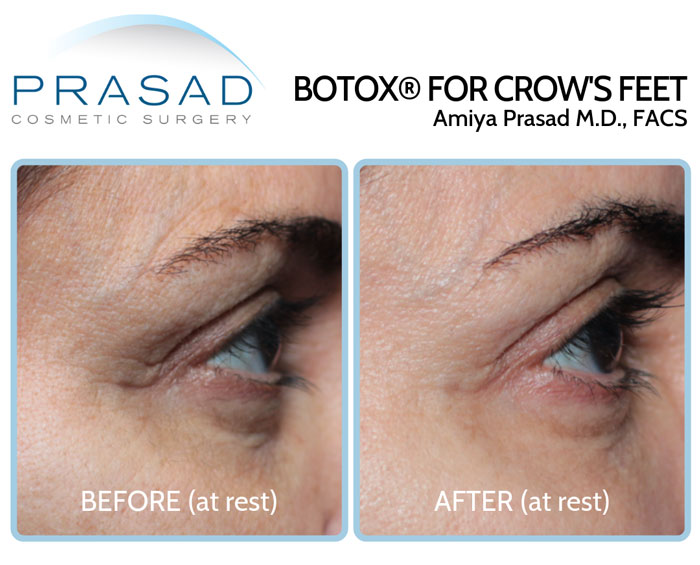
If the thin eyelid skin is weak, I believe it should be ready to respond effectively to any laser procedure, which is referred to as “skin rehab” by me.
Radiofrequency and Botox
If a patient has darker skin so they are not a candidate for laser, I use radiofrequency technology to induce collagen remodeling instead of laser. People with thin lower eyelid skin frequently have wrinkles around the eyes, such as “crow’s feet” lines. These dynamic wrinkles become deeper with expression and can be reduced with regular injections of botulinum toxin such as Botox or Dysport.
Topical skin care such as the use of retinols and moisturizers with some active ingredients can be beneficial for maintenance. This appearance and behavior of lower eyelid skin is often seen with other changes such as the prolapse of lower eyelid fat pockets.
Plastic Surgery for Under Eye Bags: Transcutaneous vs. Transconjunctival Blepharoplasty
Surgery is primarily for reducing prolapsed orbital fat that causes eye bags. Surgery to reduce under eye wrinkles is prone to complications because removing skin believed to be redundant and causing wrinkles often leads to a skin shortage, causing complications like lower eyelid retraction, and ectropion. Choosing the right surgical approach for under eye bags is critical for the delicate eye area.
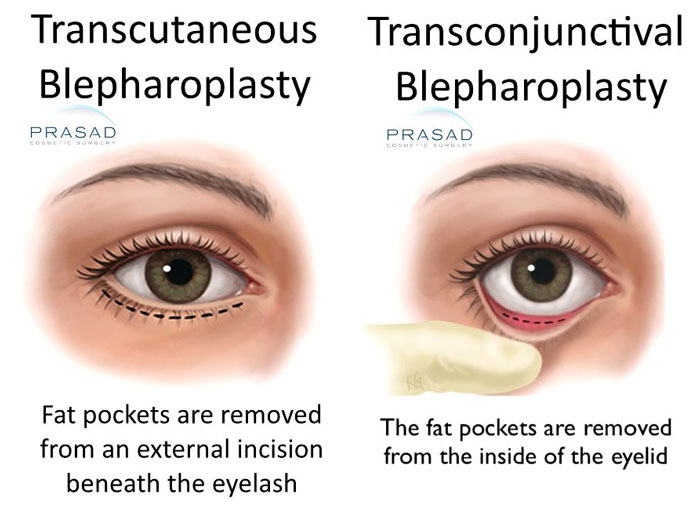
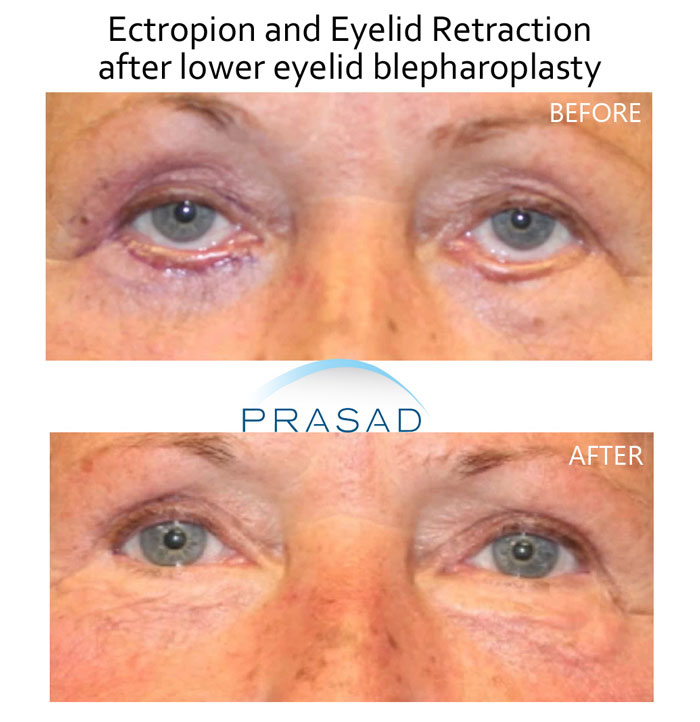
Transcutaneous Blepharoplasty (Why it is Not Advised)
Lower eyelid blepharoplasty is a surgical procedure that is used to treat puffiness under eye bags. Transcutaneous blepharoplasty is the most commonly used procedure for treating under eye bags.
A transcutaneous blepharoplasty involves making an incision just below the eyelashes, then elevating and separating the skin and muscle to address the fat that causes eye bags. Eyelid skin is typically trimmed and sutured to tighten the skin.
Transcutaneous blepharoplasty procedures can cause skin shortage due to excessive skin removal, as well as compromised lower eyelid support due to the separation of tissue layers that were previously stronger as a unified structure. Lower eyelid skin is a component of the layered structures that provide lower eyelid support. The orbicularis oculi muscle, which acts like a hammock and is attached to the bone by a structure called the lateral canthal tendon, is located just beneath the skin. When fat pockets are accessed through an external incision, these support structures are often compromised.
Common Complications with Transcutaneous Blepharoplasty
Patients who have had this surgery come to see me every week complaining of lower eyelid rounding, retraction, and even ectropion due to skin shortage after skin removal. To restore the compromised anatomy in these cases, I perform advanced reconstructive procedures such as skin and tissue grafts.
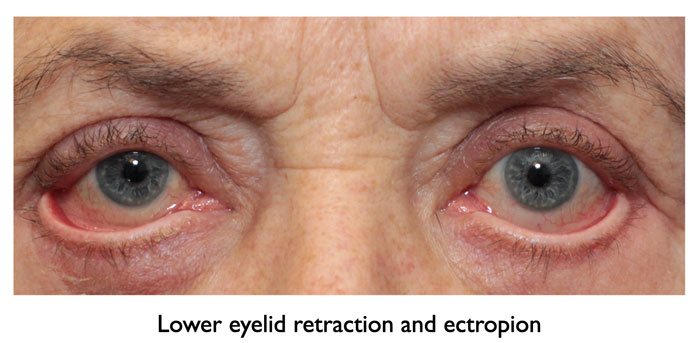
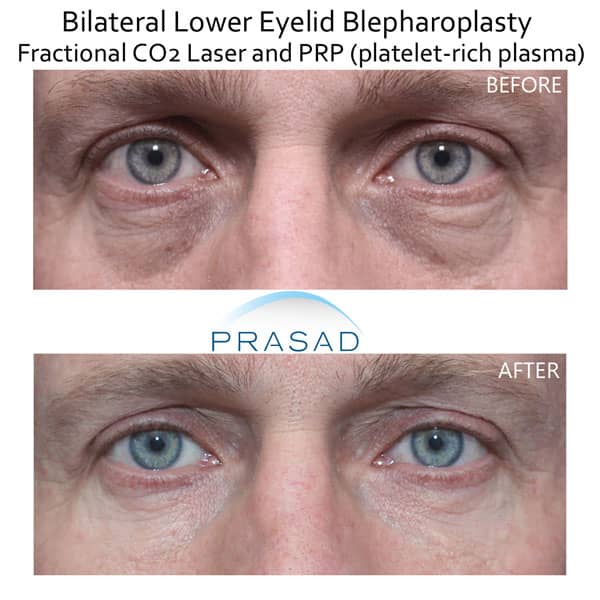
Transconjunctival Blepharoplasty (Why it is Recommended for Bags & Complementing Wrinkle Treatment)
In my practice, I perform a procedure called transconjunctival blepharoplasty for under eye bags. I sculpt the fat responsible for the eye bags from the inside of the eyelid, eliminating the need for an external incision. Transconjunctival blepharoplasty is a more complex and specialized procedure, but it enables preservation of the anatomic structures that support the lower eyelid.
For under eye wrinkles, I use fractional CO2 and erbium laser with PRP. This combination has shown to be both safe and effective in reducing the appearance of under-eye wrinkles without the need for skin removal. Again, I’m concentrating on improving the skin’s quality and maintaining the natural structure of the eyelid.
Fillers (Restoring Volume for Cheeks and Eyes)
I’ve noticed that the eyelid skin appears redundant, especially in people who lack cheek projection, when it’s simply sagging from a lack of support. Instead of removing skin, I use long-lasting hyaluronic acid fillers like Juvederm Ultra Plus and Juvederm Voluma to restore volume in the cheeks. These fillers will not weigh down the skin because I place them at the bone level, just like a facial implant with a procedure called Structural Volumizing. Structural Volumizing is very effective in restoring balance between the cheeks and the eyes.
I use local anesthesia with minimal IV or LITE sedation to perform transconjunctival blepharoplasty and most other cosmetic surgeries. My patients recover quickly and are able to return to work within a week.
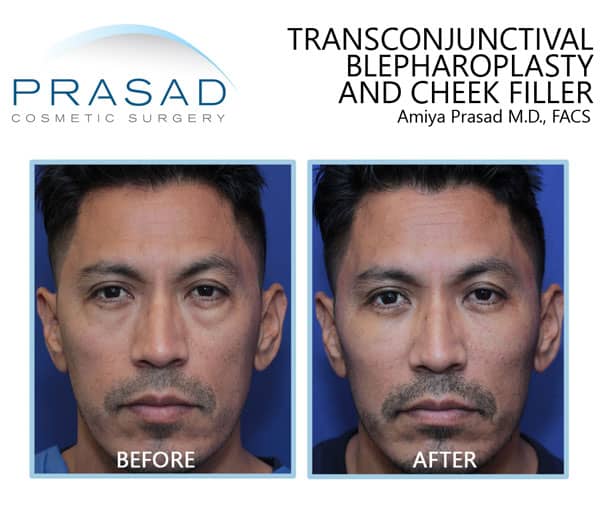
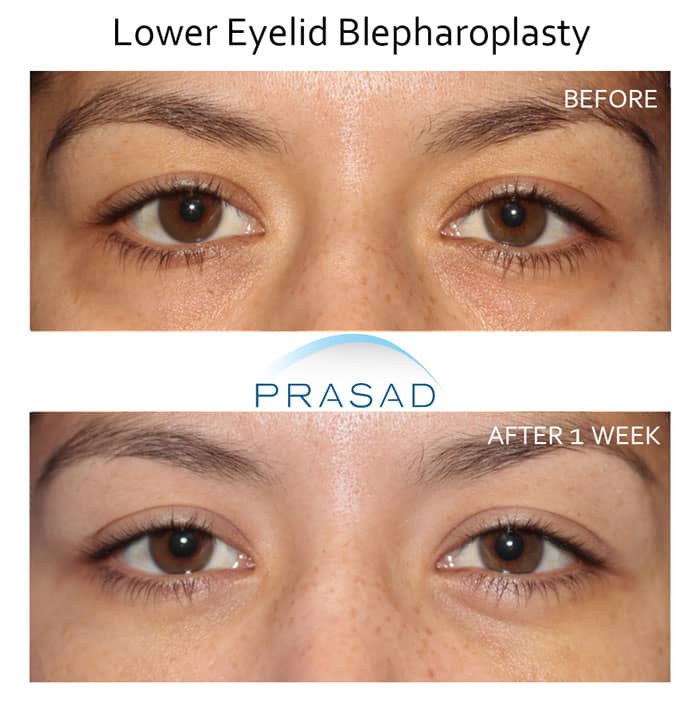
In contrast, recovery from the effects of general anesthesia alone can be unpleasant and physically draining.
Understanding Your Recovery & Our Approach
I use local anesthesia with minimal IV or LITE sedation to perform transconjunctival blepharoplasty and most other cosmetic surgeries. My patients recover quickly and are able to return to work within a week. In contrast, recovery from the effects of general anesthesia alone can be unpleasant and physically draining. We prioritize your comfort and safety, aiming for a smooth recovery for any procedure.
Conclusion: Finding the Best Procedure for Under Eye Wrinkles
If you are concerned about wrinkled skin under your eyes, understand that skin quality is more important than skin quantity in your treatment strategy. It’s also important to consider the other anatomic factors that can make the skin under your eyes appear redundant.
I cannot emphasize enough the importance of understanding the delicate structure of the eyelid skin, to avoid overly aggressive procedures that can make the skin look worse, and even jeopardize the integrity of the lower eyelid.
Although limited skin removal, such as a skin pinch procedure, can be tolerated, in my experience, the underlying qualitative issues are more important.
Doctors who recommend eyelid skin removal may believe they are doing their best to help, but you must be certain that you can maintain the natural shape of your lower eyelids. I hope this information was useful to you in understanding the nuanced approach to treating under eye wrinkles.
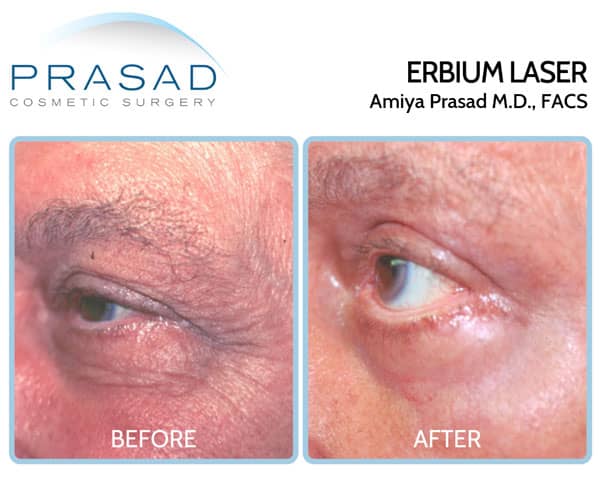
Under Eye Wrinkles Treatment in Manhattan, NYC and Garden City, Long Island, New York
Dr. Amiya Prasad is a Board Certified Cosmetic Surgeon and Fellowship Trained Oculofacial Plastic Surgeon. He’s been in practice in Manhattan, NYC and Garden City, Long Island for over 25 years. We also serve patients from our Vienna, Virginia office.
To schedule a consultation for the best procedure for your under eye wrinkles, fill out the form below or call our offices:
- Manhattan, New York City: (212) 265-8877
- Garden City, Long Island: (516) 742-4636
- Vienna, Virginia: (703) 356-1336

